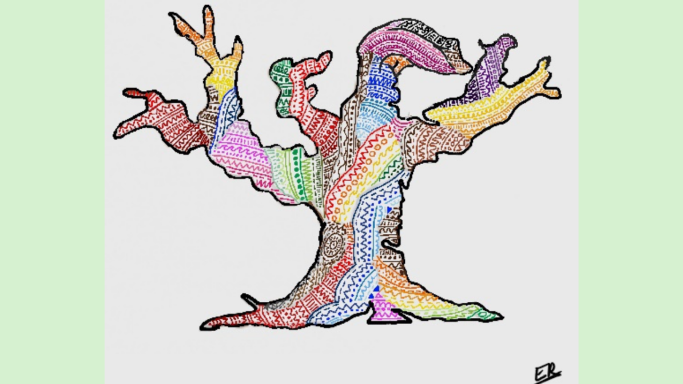It's all in the title.
It is so exciting to be able to announce the winners of this year’s writing competition, whose theme, old vines and old vineyards, really seems to have struck a chord. The standard of entries was the highest it has ever been and the tales of ancient vines truly moving, encompassing as they do such human stories as well as history, geography and – inevitably – economics. We would like to thank everyone who took such trouble to submit an entry, to congratulate the authors of all those we published, and to apologise to those whose articles didn’t quite make the cut. We really were spoilt for choice this year, and Tam did a sterling job sorting it all out.
First a recap of a few statistics:
- 136 entries received
- 74 of them published
- 20 whittled down to our shortlist, with much difficulty
- 2,538 votes from visitors to JancisRobinson.com, nagged last week.
- plus votes from our team and those who have so kindly donated or organised prizes, André Morgenthau of South Africa’s Old Vine Project, Sarah Abbott MW and Leo Austin of oldvines.org and David Amadia and David Gates of Ridge Vineyards in California.
So we have two sets of winners, between which there is remarkably little overlap.
The winner of the trip to South Africa with a focus on its Old Vine Project is … Dr Chris Howard for his scholarly but intensely readable account of the Evangelho vineyard in Contra Costa, California. That was the favourite entry of the team. Dr Howard is currently isolated in Wellington, New Zealand, so it may be quite a while before he is able to take advantage of his prize but, as an academic anthropologist, I’m sure he will take maximum advantage of his journey across the Indian Ocean.
The entry that scored the second-highest number of votes from the team was Christina Rasmussen’s on, quite coincidentally, another Contra Costa vineyard, Alan’s Alicante planting. Many congratulations!
Winners of the popular vote were agronomist Vasilis Mylonas for his delightful account of Mr Toutousanis' vineyard in Amyndeon, Greece (Mr Toutousanis was the 90-year-old who declined a lift home on the basis that he always commuted between his village and his 110-year-old vineyard on foot) and historian Adrianna Catena of Argentina for the thoroughly charming story of her grandmother’s Angélica vineyard in Mendoza. They will each receive a magnum of Ridge Vineyards’ Geyserville, grown in the oldest vineyard they farm, a traditional Zinfandel-dominated field blend with some vines that are 130 years old.
Runners-up in the popular vote were Jono Le Feuvre’s entry about South Africa’s oldest vine planting, Gevonden, which is currently under threat of being grubbed up, and Umay Çeviker’s profile of Karkın Vineyards in Cappadocia, a moving account of human tragedy and migration on an axis that is all too poignant today, that of Greece and Turkey.
So Christina Rasmussen, Jono Le Feuvre and Umay Çeviker will each receive a very smart pair of secateurs, of the sort used and recommended by Marco Simonit of Simonit & Sirch, arch-pruners and connoisseur-conservers of old vines.
I think we have proved with this competition that we are all truly interested in history and sustainability as well as geography and viticulture, and that one of wine’s great attributes is that it can put us in touch so directly with the past.
Very many thanks and congratulations to one and all. It leaves us with only one problem: how on earth can we top this next year?
You may like to visit links to previous writing competitions in 2020, 2019, 2018, 2017 and all the way back to our first writing competition in 2014.
Tamlyn adds We’ve reused the beautiful Old Vine artwork by Élise Razakazafy sent to us by her mother Hilary McGrath to accompany her shortlisted entry. I wrote to ask her about it and she replied:
‘I’m so happy that you enjoyed my work! Of course you can use it in the article for the competition. Concerning me: I was born in Ireland and grew up in France, where I am currently studying philosophy. I’ve been drawing and painting for as long as I can remember, and I loved drawing small and intricate shapes as a kid, which is how I came up with my signature geometric patterns. The colourful design has been part of almost every drawing I’ve ever done, and I became somewhat known for it in my art classes. In a way, it's incredibly therapeutic and rewarding once finished. I currently paint and draw on different mediums, and have experimented with more styles and techniques, and have been exploring Arabic patterns which bear a resemblance to my geometric patterns. When I was commissioned for a piece of artwork depicting an old vine, I fixated on the texture of the wood of an old vine and knew exactly how my style would fit in. When it comes to colours, they often add so much more life to a piece, and I noticed there weren’t many colorful pictures of vines, so I decided to take a completely abstract approach and make this piece entirely my own. Hope that helped!’

